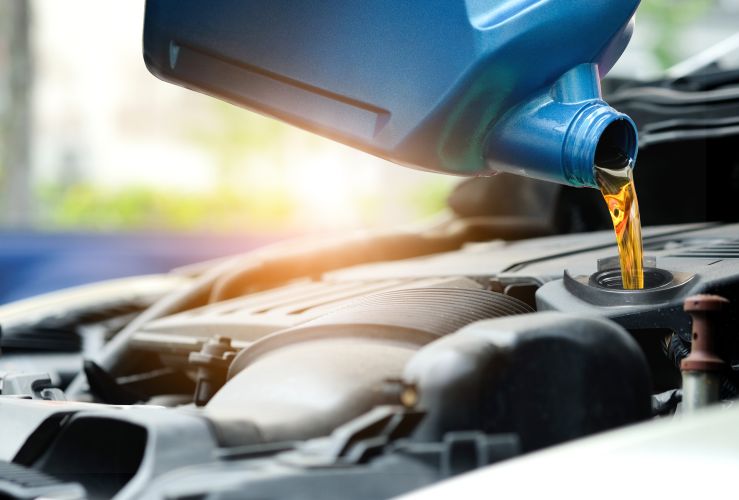All cars with combustion engines must have an adequate amount of oil to ensure efficient lubrication, cooling, cleaning and internal component protection.
How much oil your car needs will depend on how big your engine is. For example, a small car with a one-litre engine will need far less oil than a car with a three-litre engine.
The handbook that came with your car will tell you how much oil to use. If you've lost your handbook, contact the dealership that sold you the car, or contact the manufacturer directly. Otherwise, your local garage should be able to advise you.

What type of oil should I use in my car?
Once again, your vehicle's handbook will tell you exactly what type of oil to add.
It's important to use the right type of oil and to avoid introducing old or poor quality oil. You can read more on this here.
How often should I check my car's oil?
You should check your oil regularly - once every two weeks at least. If you’re planning a long journey, it’s advisable to check your oil levels then, too.
One multiple choice survey suggested that only 24% of UK motorists check their oil weekly, 29% monthly, 21% "only before a long journey", 43% responded "Never - that's why my car is serviced every 12 months," and 9% said "Oil level? Don't know what you mean."
Ensuring your car is topped up with sufficient oil and scheduling regular car oil changes will prolong the life of your engine.
How to check your oil level:
- Lift your bonnet and find the dipstick - it will be near your engine and may have a brightly coloured T-shaped handle.
- Remove the dipstick and clean it with a clean rag or tissue, then slot it back in.
- Remove it once more and you should see oil on it. There are two stamped markings on the dipstick - the oil level should be between these points. If this is the case, you have sufficient oil and can continue driving.
- If the oil level is below the lower mark, you should top up your oil, then check the oil level again before driving.
Our helpful video will show you, step-by-step, how to check your car oil levels and how to add oil to your car:
Other signs your car’s oil levels are low
Checking your oil levels regularly should prevent the following happening in the first instance…
- Oil pressure warning light comes on - the vast majority of modern cars are fitted with this kind of system
- Smell of burning oil - there could be a leak causing oil to drip on to hot engine parts, burning the oil
- Clunking sound from the engine - due to poorly-lubricated parts
- Poor engine performance - engine components must work harder if they are not well-lubricated
- Overheated engine - due to moving parts rubbing against each other without sufficient lubrication
How much engine oil does a car need?
The amount of oil a car needs depends on the engine size. For example, the answer to how many litres of oil my car takes will vary between 3 to 8 litres. Always check your handbook for your car's oil capacity.
Read our helpful guide on choosing the right engine oil.
Frequently Asked Questions
Your car’s handbook will tell you the oil capacity. If you’ve lost it, contact your dealership, the manufacturer, or your local garage.
It depends on the car and how you drive. A litre of oil may last several thousand miles, but always monitor your levels regularly.
Check your oil level every two weeks. Also, check it before long journeys or if you suspect an issue with your engine.
Overfilling can cause oil to foam, reducing lubrication and potentially damaging your engine. If this happens, visit a mechanic to drain the excess oil.
It’s best not to mix oils, as it can affect your engine’s performance. Stick to the oil type recommended in your handbook.
Use the dipstick under the bonnet. Clean it, insert it back in, and check that the oil level is between the stamped markings.
Your vehicle’s handbook will specify the correct type of oil. If unsure, consult your garage or the manufacturer for advice.




